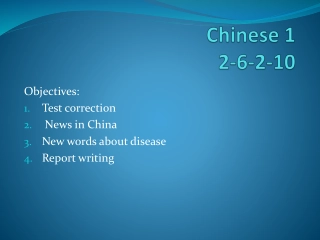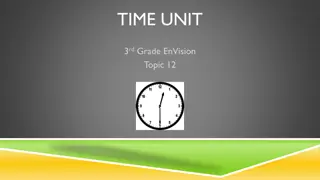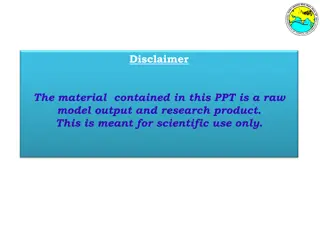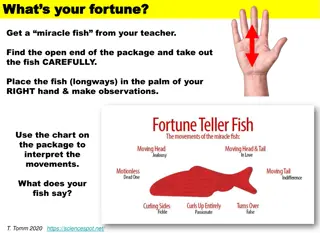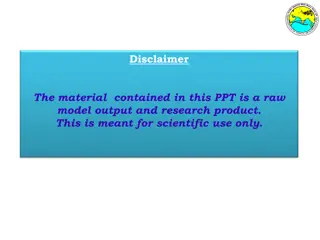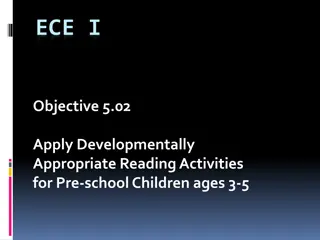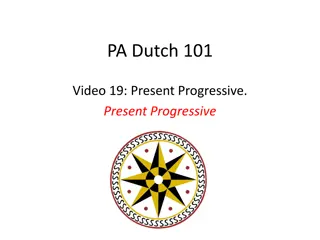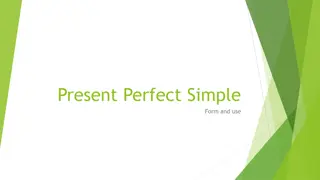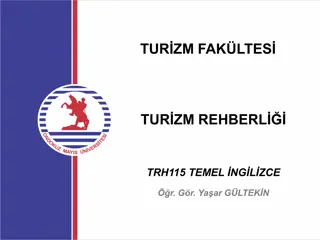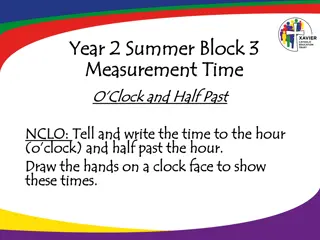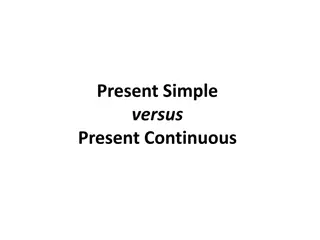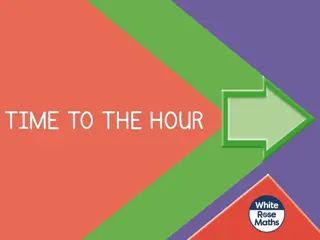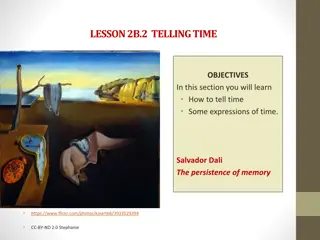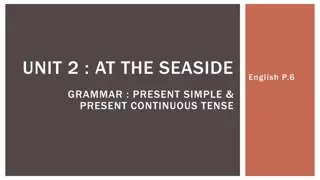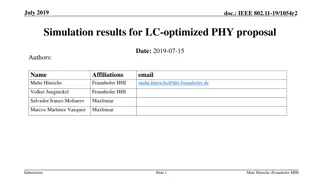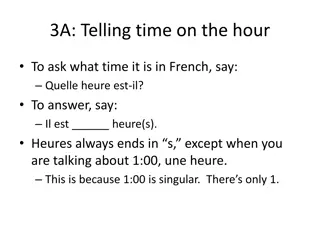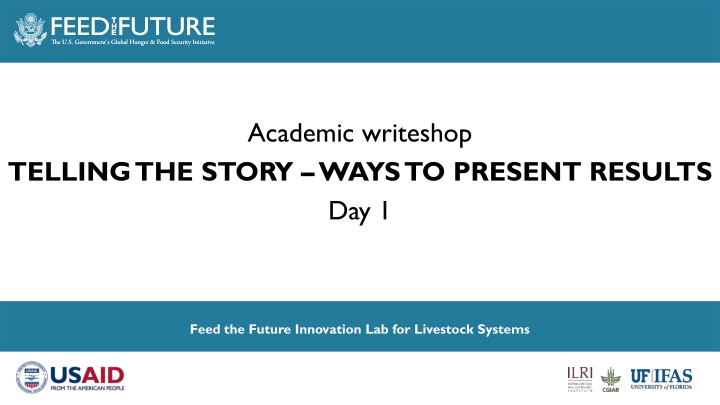
Effective Ways to Present Results in Academic Writing
Learn how to effectively present results in academic writing to improve readability and comprehension. Understand the importance of structuring your results section, utilizing graphs and tables, and choosing the right presentation methods based on your research approach. Enhance the visual appeal of your findings to engage readers and convey your scientific story accurately.
Download Presentation

Please find below an Image/Link to download the presentation.
The content on the website is provided AS IS for your information and personal use only. It may not be sold, licensed, or shared on other websites without obtaining consent from the author. If you encounter any issues during the download, it is possible that the publisher has removed the file from their server.
You are allowed to download the files provided on this website for personal or commercial use, subject to the condition that they are used lawfully. All files are the property of their respective owners.
The content on the website is provided AS IS for your information and personal use only. It may not be sold, licensed, or shared on other websites without obtaining consent from the author.
E N D
Presentation Transcript
Academic writeshop TELLING THE STORY WAYS TO PRESENT RESULTS Day 1 Feed the Future Innovation Lab for Livestock Systems Photo Credit Goes Here
OUTLINE Starting with the Results Tools to present Results Determining the order of presentation for tables/graph/figures/data within Results Writing time Share & Listen
WHAT IS THE RESULTS SECTION? The Results section summarizes and presents the findings of the study to put them in context with your research question(s). Do not attempt to interpret the findings, only state the facts. The study s data should be presented in a logical sequence, without bias or interpretation. It is important to include a contextual analysis of the data by tying it back to the research question(s). Only share relevant data and findings that connect with the goal of the study; too much data may overwhelm a reader.
PRESENTING DATA: DEPENDS ON METHODS USED Qualitative Research Quantitative Research Mixed Non-numerical, descriptive data, such as language, themes, and ideas that reflect the human experience. When presenting qualitative results, you typically focus on descriptive and interpretive approaches. Characteristic of Social Sciences. If the data can be counted, it is quantitative. Numbers-based approaches that involve statistics, calculations, and data measurements. Go back to the Tools, which are common for quantitative research data presentation. Characteristic of STEM- related disciplines. Mixed set of data from both qualitative and quantitative research.
STARTING WITH THE RESULTS A well written and structured Results section guides the reader along your scientific story. Writing a paper starts with making an outline of the results section, by putting the graphs and tables (i.e., the artwork) in the correct order and making a few notes on what to write about them. o Graphs, Figures, & Tables are effective tools to present outcomes of the experimental work. o If you want the scientific community read your work, have the Artwork. All Artwork must present information to "share the storyline of your research" in a truthful manner, so that the reader will draw the correct conclusions. All Artwork should be able to stand alone with its caption, so the reader can understand what it is about.
THE TOOLS: GRAPHS Suitable for conveying information in an easily understandable manner At least 10 different types of graphs (e.g., X-Y Scatter Plot, Line Graph, Bar Chart, Histogram, etc.) Can be combined Make numbers and letters in graphs readable Source: ter Kuile, 2024 (page 21)
THE TOOLS: TABLES Best for giving unprocessed information such as numbers or lists Summarize more detailed information that requires more effort from reader but allows them to select what is relevant Source: ter Kuile, 2024 (page 34) Human eye follows vertical lines easier than horizontal lines
THE TOOLS: FIGURES Provides a snapshot of your key message Can be also used in Methods section to summarize or graphically present your conceptual model Good for comparing result outcomes A rule of thumb combine creativity with truthful presentation of your results so the reader can draw correct conclusions Source: Acosta et al, 2022
EXAMPLE OF QUALITATIVE RESULTS Source: Acosta et al. 2022 (page 6)
DETERMINING THE ORDER OF PRESENTING YOUR RESULTS Ensure data is presented in a logical order 1. Begin with an introduction to connect the results with the research question(s). 2. Present findings in a structured way (such as thematically or chronologically), bringing the readers attention to any important, interesting, or significant findings. Include a combination of text and visuals. Visuals should not be used to substitute or replace text - they aid in enhancing the narrative of your findings. 3. Include a closing paragraph that clearly summarizes the key findings of the study. This leads readers to the Discussion section, wherein the results are interpreted and put in a broader context and with existing literature.
BEST PRACTICE FOR RESULTS SECTION Once you decide the line-up of graphs and tables, make a completeness check identify any holes in your story: Is there a missing piece of information in your narrative? Can you think of an experiment to help you fill that void? Significance Check: Are the crucial data strong enough to support your story? Consider how to analyze these data in the framework of the existing information on the subject which is done in the Discussion. Helpful to follow with Discussion outline, as these sections can be adjusted to each other. Don't repeat other sections (e.g., Results).
WRITING BLOCK (60 MIN) Working individually. Summarize a table, a graph or a figure in the Results section
SHARE & LISTEN (10 MIN) 1-2 volunteers share their Results section.
Feed the Future Innovation Lab for Livestock Systems https://livestocklab.ifas.ufl.edu/ https://livestocklab.ifas.ufl.edu/ (Subscribe to newsletter) livestock-lab@ufl.edu livestock-lab@ufl.edu (Send questions or comments) Disclaimer This work was funded in whole or part by the United States Agency for International Development (USAID) Bureau for Resilience, Environment and Food Security under Agreement # AID-OAA-L-15-00003 as part of Feed the Future Innovation Lab for Livestock Systems. Additional funding was received from Bill & Melinda Gates Foundation OPP#060115. Any opinions, findings, conclusions, or recommendations expressed here are those of the authors alone.


